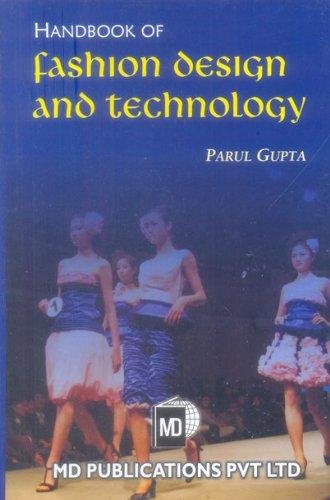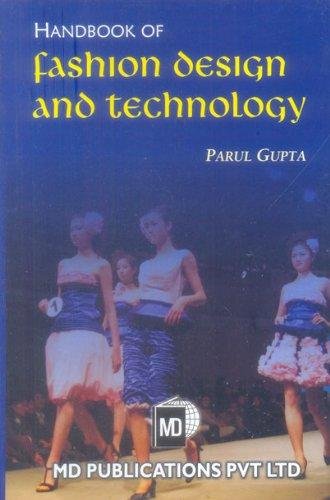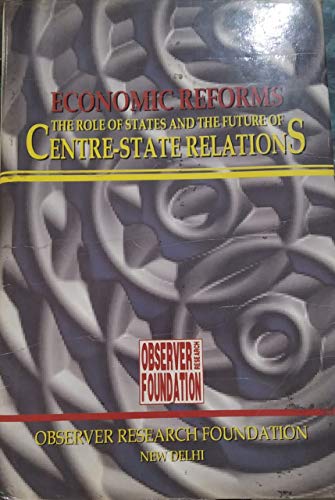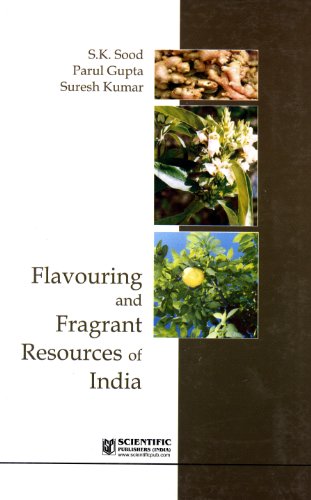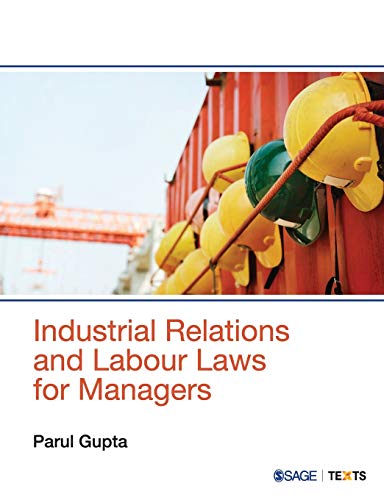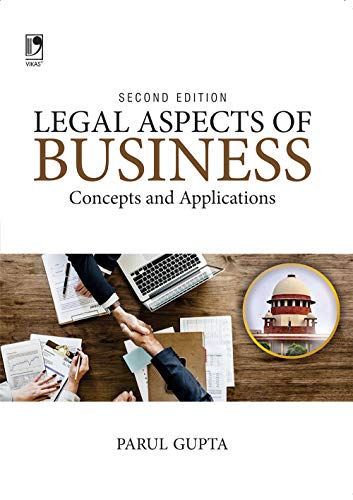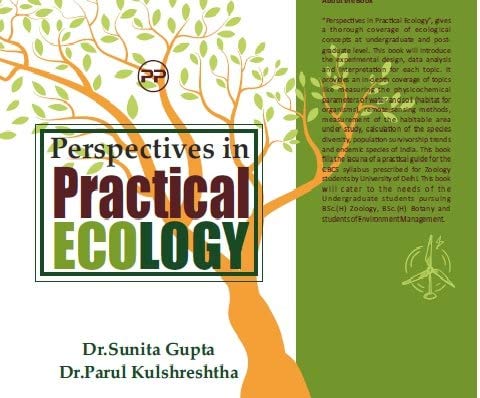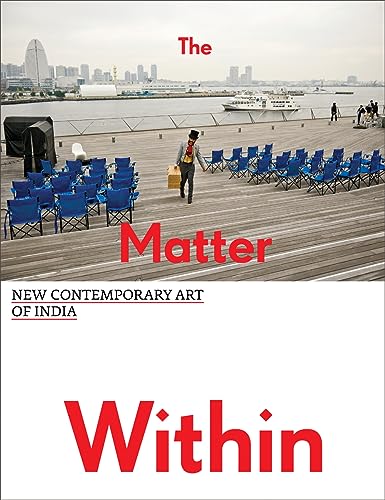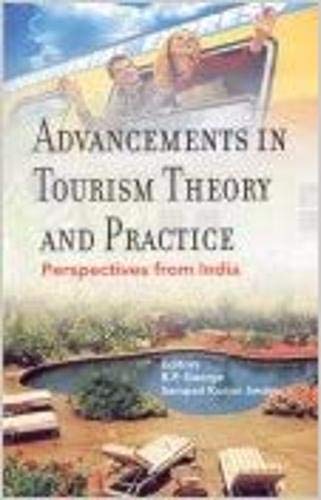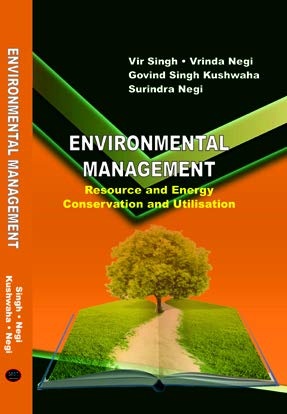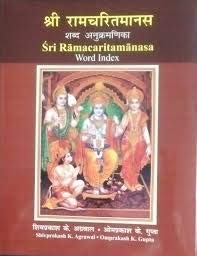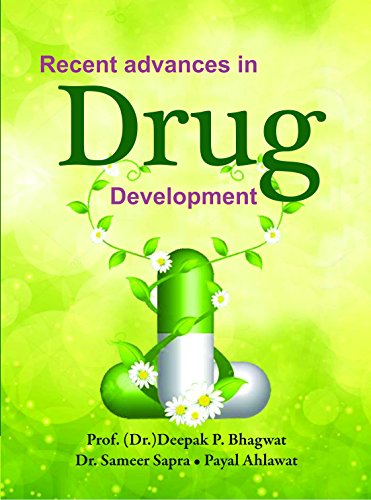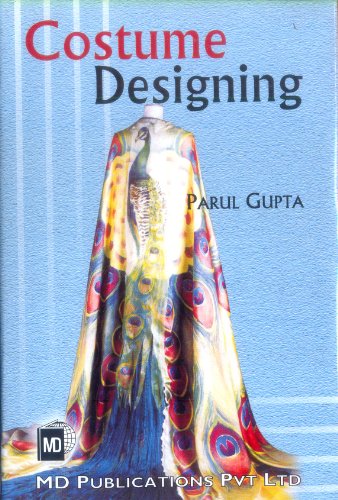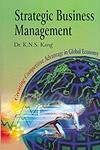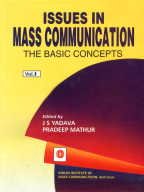Parul Gupta (90 results)
Product Type
- All Product Types
- Books (90)
- Magazines & Periodicals
- Comics
- Sheet Music
- Art, Prints & Posters
- Photographs
- Maps
-
Manuscripts &
Paper Collectibles
Condition
Binding
Collectible Attributes
Free Shipping
Seller Location
Seller Rating
-
Logistics Management BBA 6th Sem. Kuru. Uni.
Published by Kalyani Publishers, 2015
ISBN 10: 9327249623ISBN 13: 9789327249620
Seller: Books Puddle, New York, NY, U.S.A.
Book
Condition: New.
More buying choices from other sellers on AbeBooks
New offers from US$ 8.22
-
Practical Problems in Financial management B.Com (Pass & Prof.) BBA, M.Com, MBA GNDU
Published by KALYANI, 2015
ISBN 10: 9327255410ISBN 13: 9789327255416
Seller: Books Puddle, New York, NY, U.S.A.
Book
Condition: New. 1st edition NO-PA16APR2015-KAP.
More buying choices from other sellers on AbeBooks
New offers from US$ 8.92
-
Economic Reforms : The Role of States and the Future of Centre-State Relations
Published by Observer Research Foundation, 1996
ISBN 10: 8186818006ISBN 13: 9788186818008
Seller: Books Puddle, New York, NY, U.S.A.
Book
Condition: New. pp. 234.
More buying choices from other sellers on AbeBooks
New offers from US$ 14.17
-
Flavouring and Fragrant Resources of India
Published by Scientific Publishers, 2010
ISBN 10: 8172336357ISBN 13: 9788172336356
Seller: Books Puddle, New York, NY, U.S.A.
Book
Condition: New. pp. xii + 254 Index.
More buying choices from other sellers on AbeBooks
New offers from US$ 15.38
Used offers from US$ 69.99
Also find Hardcover
-
Industrial Relations and Labour Laws for Managers
Published by Sage Publications, 2019
ISBN 10: 9353281830ISBN 13: 9789353281830
Seller: Books Puddle, New York, NY, U.S.A.
Book
Condition: New. pp. 512.
More buying choices from other sellers on AbeBooks
New offers from US$ 15.66
Used offers from US$ 24.96
Also find Softcover
-
Kalyani Commerce Series Simplified Approach to Financial Management B.Com (Prof.) 6th Sem. PTU
Published by KALYANI, 2017
ISBN 10: 932727346XISBN 13: 9789327273465
Seller: Books Puddle, New York, NY, U.S.A.
Book
Condition: New.
More buying choices from other sellers on AbeBooks
New offers from US$ 16.64
-
Principles of Management B.Tech. 6th Sem. WBUT
Published by KALYANI, 2014
ISBN 10: 9327237668ISBN 13: 9789327237665
Seller: Books Puddle, New York, NY, U.S.A.
Book
Condition: New.
More buying choices from other sellers on AbeBooks
New offers from US$ 17.70
-
Legal Aspects Of Business: Concepts And Applications, 2Nd Edition
Published by Vikas Publishing, 2020
ISBN 10: 9353386446ISBN 13: 9789353386443
Seller: Books in my Basket, New Delhi, India
Book
Soft cover. Condition: New. ISBN:9789353386443,Territorial restriction maybe printed on the book. This is an Int'l edition, ISBN and cover may differ from US edition, Contents same as US edition.
More buying choices from other sellers on AbeBooks
New offers from US$ 11.12
-
Against the Current : Vol: III: Electricity Act and Technical Choices for the Power Sector
Published by Manohar, New Delhi, 2006
ISBN 10: 8173046840ISBN 13: 9788173046841
Seller: Vedams eBooks (P) Ltd, New Delhi, India
Book
Hardbound. Condition: As New. New. Contents Acknowledgements. Contributors. Introduction. I. Electricity Act and efficiency in generation distribution 1. Electricity Act and Enterprisation of the State Electricity Boards/Joel Ruet. 2. Central Act and State Acts/G. Subba Rao. 3. Markets through the back door/Sudha Mahalingam. 4. Benchmarking of electricity distribution companies in India/Prem K. Kalra V.P. Singh and Yogesh K. Bichpuriya. II. Technical choices and management 5. Need for distribution system reforms and customer training/A.K. Saxena and Prem K. Kalra. 6. Application of information technology to improve performance in power distribution/Sanjay Gupta. 7. Broad technology choices and technology mix for the power sector/R.K. Belapurkar. 8. Voltage control through reactive power management case studies/Mahendra Kumar. 9. Transmission line congestion management using Bid Areas Division Technique/D.P. Kothari and Parul Goyal. 10. Integrated resource planning in supply side management in power system/Prem K. Kalra Yogesh K. Bichpuriya and V.P. Singh. III. Macro level aspects what to do as reforms 11. A benchmarking of performance of Indian state level electricity utilities in the post liberalization period/N. Balasubramanian. 12. Generation choices a retrospective account of the Ninth Plan/Joel Ruet. 13. Electricity reforms firm level responses and environmental implications/Deepa Menon Choudhary P.R. Shukla Tirthankar Nag and Debashish Biswas. 14. The act as a base for rethinking technology and managerial mixes/Joel Ruet. The State Electricity Boards (SEB) present huge potential for daily change in the lives of a billion strong Indian population. Often described as nearly impossible to reform SEBs offer huge untapped potential for higher technological efficiency that in turn could mean reliable electricity for day to day life reduced bills for the users and the public exchequer higher environmental sustainability. For this potential to appear clearly in the public debate the so called technicalities of the power sector should no longer be the monopoly of a few specialists and technocrats. And indeed India's history of economic regulation has entered into a new era when in the power sector the model of independent regulation for utilities got enacted through the Electricity Regulatory Commissions Act 1998 then followed by the new Electricity Act 2003. The Regulatory Commissions gained a saying in virtually all technical matters within the utilities. The biggest chasse gardee of the SEBs engineers had not resisted. This volume comes as third in a series on the power sector reforms in India. The series attempts at understanding (i) the organizational tasks (ii) the tariffs aspects (iii) the role of the private (iv) the role of technology in the complex variegated state specific Indian scenario. A clear and sound public debate on tariffs service advantages and limits of privatization in the Indian scenario can only come from an informed assessment of current margins in technological enhancement of SEBs and on the relevance of the Act in framing such a new Indian power system. This volume wishes to contribute to this debate. 220 pp.
-
Modern Banking in India : Dimensions and Risks
Published by New Century Publications, 2009
Seller: Vedams eBooks (P) Ltd, New Delhi, India
Book
Hardcover. Condition: New. Contents 1. Profitability and efficiency in Indian banks/Deepak Tandon Neelam Tandon and Anurag Arora. 2. Impact of globalisation on Indian banking/Harish K. Chopra. 3. Changing face of Indian banking/R.K. Uppal Rachna Kumari Rosy Chawla and Poonam Rani. 4. Economic reforms and efficiency of banks in India/Rajinder Punia and Himanshi Rampal. 5. Recent developments in Indian banking sector/Inderpreet Kaur Parul Bhandari and Priyanka Gupta. 6. Structural shifts in banking business/Aiswarya S. Pradeep. 7. Wireless banking/Deepshikha Bhargava. 8. Policies and strategies for strong banking/R.K. Uppal and Rachna Kumari. 9. Customer security management in retail banking/R.K. Agarwal R.C. Mathur and Abhinn Baxi. 10. Indian banks and information technology /Avik Roy and Deepika Jain. 11. Growth dimensions of Indian banks/Esha Singh and Rajat Bansal. 12. Corporate social responsibility (CSR) in banking/Gagandeep Kaur and Pooja Bhalla. 13. Reverse mortgages an innovation for elderly homeowners/Palvi Singh. 14. Competition policy and banking sector/Navdeep Kumar. 15. Retail banking in India/Keyur M. Nayak. 16. Work culture in Indian banking sector/Amanpreet Singh Brar Inderpreet Kaur and Rupinder Kaur. Index. The key objective of reforms in the banking sector in India since early 1990s has been to enhance the stability and efficiency of banks. The enactment of the securitisation reconstruction of financial assets and enforcement of security interest (SARFAESI) act 2002 was an important landmark in the ongoing reforms in the financial sector. The act enables the setting up of asset management companies addressing the problem of non performing assets (NPAs) of banks and financial institutions and enhancing creditor rights. In the Indian context the financial sector especially the banking sector has been a major beneficiary from the inroads made by information technology (IT). However technical characteristics of internet technology have raised new concerns for both bankers and supervisors. Bankers have identified security risk as a primary concern relating to e banking. External threats such as hacking sniffing spoofing and denial of service attacks expose banks to new security risks. The present volume contains 16 well researched papers dealing with different aspects of current banking practices in India. The papers authored by experts in the field explain and evaluate Indian banking system in the liberalised regime and offer policy recommendations for improving efficiency of banks to achieve standards comparable to best international practices. This work it is hoped would prove immensely useful to academicians as well as practitioners in the field. 262 pp.
-
Environmental Issues : Behavioural Insights
Published by Rawat, 2009
ISBN 10: 8131602613ISBN 13: 9788131602614
Seller: Vedams eBooks (P) Ltd, New Delhi, India
Book
Hardcover. Condition: New. Contents Preface. Acknowledgements. Contributor's profile. I. Environment and development 1. People and the environment musings of a dinosaur/Michael S. Philip. 2. Limiting resources and consumptive behaviour from social dilemmas to ethical self/Parul Rishi. 3. Climate change and human psyche a relook at choice/Parul Rishi. 4. Coping with urban environmental stress/Gayatri Khuntia and Parul Rishi. II. Environmental attitudes and behaviour 5. Mind your mindset environment demands positive action/Parul Rishi. 6. People environment relationship some insights/Nachiketa Tripathi. III. Ethics business and environment 7. Environmental ethics is the corporate responsibility an Indian perspective/Ananda Das Gupta. 8. Environmental initiatives and corporate practices the case of Hind Lamps Ltd. of the Bajaj Group/Parul Rishi Parag Dubey and Swati Moghe. IV. Environmental leadership 9. The challenge in environmental policy and leadership a case of Bolivia/Juan Pablo. 10. Essential skills for environmental leadership in a global context/Leslie E. Wildesen and Jeanne C. Crouch. V. Environment for global well being 11. Positive environmental appraisal and spiritual mindset for global well being beyond materialism/Parul Rishi. 12. We care for the planet Linking spirituality with worldliness at Dayalbagh/Parul Rishi. Conclusions Humanizing the planet for global well being. Index. This book is motivated by the belief that psychology has much to contribute in offering behavioural insights to recent environmental issues which are threatening the very existence and quality maintenance of planet earth. Due to the limited awareness of people regarding potential of behavioural sciences in offering solutions to environmental problems much of the environmental issues are oscillating in the hands of technological experts still longing for lasting solutions. This book brings together the perspectives of psychologists environmental scientists corporate mangers and natural resource conservationists to culminate into a chain of thoughts which take an integrative approach in balancing interrelationship between people and environment. The contents of book are varied ranging from hardcore theories to consumptive behaviour of people and their mind set corporate social responsibility environmental leadership skills and well being. What makes this book unique in terms of its approach is the inclusion of recent environmental problems like global warming climate change and urban environment stress and offering their behavioural solutions. The book having a research oriented facet will encourage researchers in the field for taking up concerned issues and offer universally desirable new behavioural insights into environmental problems. 230 pp.
-
Perspectives in Practical Ecology
Published by Prestige Publishers, 2021
ISBN 10: 8194942853ISBN 13: 9788194942856
Seller: Vedams eBooks (P) Ltd, New Delhi, India
Book
Hardcover. Condition: New. Contents: 1. Introduction to pond ecosystem. 2. Study of the biotic components of a water ecosystem: Phytoplankton and Zooplankton. 3. Calculation of population density in a natural/hypothetical community and calculation of its Shannon Weiner diversity index by Quadrat method. 4. Study life tables, survivorship curves and fecundity tables of the hypothetical population. 5. Measuring temperature of water. 6. To study the turbidity and the area of an aquatic ecosystem. 7. To study the types of soil, their texture by Sieve method and rapid test for pH, Chlorides, Nitrates, Carbonates and organic carbon. 8. To study the principle of Global Positioning System (GPS) and Geographic Imaging System (GIS). 9. Measuring pH of water. 10. To study the quality of water by using Alkalinity as a parameter. 11. Estimation of the dissolved Oxygen content of water by Winkler s method. 12. To estimate Chemical Oxygen Demand (COD) in the water sample. 13. To estimate free CO2 in the water sample. 14. To study the quality of water by using Chloride concentration as a parameter. 15. To study pollutant Phosphate in the water sample. 16. To study pollutant Nitrate in the water sample. 17. To study pollutant Sulfates in the water sample collected from a polluted area. 18. To measure the electrical conductivity of the given sample. 19. Ecologically important animals of India.
-
The Matter Within: New Contemporary Art of India
Published by Yerba Buena Center for the Arts, San Francisco, California, 2012
ISBN 10: 0982678940ISBN 13: 9780982678947
Book
Hardcover. Condition: Vg. No dj, illustrated boards. 127 pages : illustrations (chiefly color). "The Matter Within: New Contemporary Art of India, October 15, 2011-January 29, 2012. Yerba Buena Center for the Arts, San Francisco, CA"--Colophon./ Includes selected bibliographical references (pages 122-123). Contents: Foreword / Kenneth J. Foster -- Acknowledgments / Betti-Sue Hertz -- Fragments of India : with thought, feeling, and emotion / Betti-Sue Hertz -- The "new" Indian sculpture / Zehra Jumabhoy -- Sculpture : Rina Banerjee, Anita Dube, Shilpa Gupta, Siddhartha Kararwal, Sreshta Rit Premnath, Sudarshan Shetty, Thukral & Tagra -- The photographic present : the here and the now of contemporary Indian art / Parul Dave Mukherji -- Photography : Nikhil Chopra, Gauri Gill, Sunil Gupta, Dhruv Malhotra, Pushpamala N., Tejal Shah, Bharat Sikka, Anup Mathew Thomas -- Time for a hundred visions and revisions, which a moment may reverse / Nancy Adajania -- Video : Ayisha Abraham, CAMP, The Otolith Group, Raqs Media Collective.
-
Serum Prolactin in epileptic and pseudo seizures in children: Usefulness of Serum Prolactin in epileptic and pseudo seizures in children
Published by LAP LAMBERT Academic Publishing, 2013
ISBN 10: 3659392596ISBN 13: 9783659392597
Seller: Lucky's Textbooks, Dallas, TX, U.S.A.
Book
Condition: New.
More buying choices from other sellers on AbeBooks
New offers from US$ 41.64
Used offers from US$ 107.25
Also find Softcover
-
Advancements in Tourism Theory and Practice : Perspectives from India
Published by Abhijeet, Delhi, 2005
ISBN 10: 8188683752ISBN 13: 9788188683758
Seller: Vedams eBooks (P) Ltd, New Delhi, India
Book
Hardbound. Condition: As New. New. Contents Foreword. Preface. 1. Pilgrimage tourists to Varanasi (Kashi) critique of the theories and a search for self organised patterns in space and time/Rana P.B. Singh and John M. Malville. 2. Tourism and the changing face of Goa/Zelia Breda. 3. SERICSAT The development of a preliminary instrument of measure service recovery satisfaction in tourism/Babu P. George and G. Anjaneya Swamy. 4. Sustainable eco tourism a catalyst for socio economic development/B.B. Parida and Sampad Kumar Swain. 5. Indian tourism issues challenges and outlook/Aparna Raj Parul Parihar and Santosh Kr. Upadhyay. 6. Tourism and environmental quality some principles and experiences in the Indian context/Gopal Poyyamoli and Babu P. George. 7. Tourism destination management/Renu Malra. 8. Tourism curriculum designing for bridging the gap between industry and education needs/Ranbir Singh. 9. Marketing strategies for the promotion of tourism destinations a case study/K. Mohan. 10. Laws preservation of monuments and tourism in India/Pallavi Gupta and Anuradha. 11. The role of tour operators in creating the total holiday experience some fresh musings/Purva G. Hegde Desai. 12. HRD practices in the Indian tourism sector an overview/Sampad Kumar Swain. 13. New product development for tourism a study in Pondicherry Region/Z. Nihmathullah. 14. Tourism business the E Horizon/Jagdeesh Pandian. Although tourism in India has already grown as a highly complex practice nothing that happens here gets documented for further reflections. Needless to say tourism theory here is still at its infancy. Wisdom acquired through years of industrial practice remains at the tacit level which causes difficulties in it being communicated to others. What we have are theoretical models developed elsewhere not in anyway connected with the native practice. Also many of these models are laden by theories that preceded the development of practice and thus are still hypothetical. It is not that theories should always succeed practice but that all good social theories have a cultural logic which can come about only when the theories are contextualized within the elements of native practice. This being the case there are a lot of lapses and lacunas with respect to Indian tourism that we have to look urgently upon. A body of situated theoretical and applied knowledge about tourism in India is an urgent need of the time. For the Indian tourism industry to be in control of its destiny theoretical sophistication as well as recursive reflections of the practice in the light of theory is a foundational prerequisite. The present volume Advancements in Tourism Theory and Practice Perspectives from India is to be seen in this backdrop. It aims to compile together strands of thought by tourism theoreticians and practitioners which serve as a truthful reckoner of the present level of scientific knowledge about Indian tourism. 294 pp.
-
Modern Trends in Forensic Science
Published by Shree, New Delhi, 2006
ISBN 10: 8183290809ISBN 13: 9788183290807
Seller: Vedams eBooks (P) Ltd, New Delhi, India
Book
Hardbound. Condition: As New. New. Contents Preface. 1. Computer related crime/Ritesh G. Menezes Jagadish P.P. Rao Rohan D. Fernandes and Vishal Chhabra. 2. Simulation of normal human ECG and arrhythmias using microcontroller/Shahanaz Ayub and M.A. Ansari. 3. Virtual reality in biomedical engineering/Shahanaz Ayub. 4. A preliminary study on the left and right handed writings/Mangala Tiwari V.R.S. Chauhan and P.K. Janjua. 5. The scientific physical examination of ink writing/Dinesh Jagannath Narayankar. 6. Counterfeits and computers a forensic approach/Loganathan L. and Narinder Singh. 7. Chromatographic detection and identification of Lambda Cyhalothrin a case study/P. Bhatt S. Shrivastava and M.K. Verma. 8. Nature and causes of crimes a case study/Geeta Yaday Meenakshi Singh Pratibha Arya and Anjali Saxena. 9. Payment card fraud/Jagadish P.P. Rao and Ritesh G. Menezes. 10. Reconstruction of stature through upper limb measurement among Brahmins of Jhansi Buldel Khand/Sarita Singh Anu Singla and Surinder Nath. 11. Stature reconstruction among Brahmins and Yadavs of Jhansi a comparative study/Parul Arora Piyusha Majumdar Anu Singla and Surinder Nath. 12. Reconstruction of stature using hand and foot lengths among Yadavs of Jhansi/Piyusha Majumdar Parul Arora Anu Singla and Surinder Nath. 13. Prediction of stature through upper and lower limb dimensions among two female groups of Haryana/Renu Rani Sarita Singh and Surinder Nath. 14. Prediction of stature through the lower limb dimensions among Brahmin and Jat females of Sampla Haryana/Bhavna Kanika Khurana Reena Singh Kanudeep Kaur and Surinder Nath. 15. Reconstruction of stature through upper and lower extremity measurements among Punjabi females of Ghaziabad/Kanika Khurana and Surinder Nath. 16. Reconstruction of stature using upper extremity measurements among Jat and Brahmin females of Sampla Haryana/Surinder Nath Kanudeep Kaur and Reena Singh. 17. Evaluation of bilateral differences and restoration of stature from lower limb dimension among the Brahmins of Bundelkhand/Anu Singla Piyusha Majumdar Kanudeep Kaur and Surinder Nath. 18. Restoration of stature using hand and foot lengths among Shia Muslims of Delhi/Bhavna and Surinder Nath. 19. Reconstruction of Ulnar length from measurements of the Olecranon coronoid complex/Surinder Nath and G.D. Gupta. 20. Use of lower limb measurements in reconstructing stature among Sunni Muslims of Delhi/Renu Rani and Surinder Nath. 21. Reconstruction of stature among Shia Muslims of Delhi using hand and foot lengths/Bhavna and Surinder Nath. 22. Determination of stature using lower limb dimensions/Preeti Jain Sarita Singh Parul Arora Piyusha Majumdar Kanudeep Kaur and Surinder Nath. 23. Bite mark identification a tool for crime investigation/Sheikh Mansoor Ali Ansari and Praveen K. Janjua. 24. A survey on the trends in drugs of abuse/Navjot Kaur and Ramesh Chandra. 25. Expert testimony of forensic report and its critical evaluation in the court of law a case report/C.M. Patel and J.M. Vyas. 26. Preventive forensics in handling counter terrorism/M.S. Rao. 27. Investigation of forensic glass fractography made by different ammunition/N.P.W. Aghmare A. Manna M.S. Rao S. Bagchil and R. Suresh. 28. Country made firearms a raw deal/Anil Kainthola Ritesh K. Shukla Somesh Verma and Shruti Chauhan. 29. Forensic acoustics and recent trends in forensic speaker identification/S.K. Jain. Forensic science includes a widespread multiplicity of methodical and medico legal disciplines. Forensic science intends to make available unprejudiced scientific support for use in courts of law. Scientific examination of materials evidence is compulsory to lend a hand to the law enforcement agencies in their pursuits. This volume incorporates twenty nine research articles on a range of aspects of research in forensic science starting with the Cyber crime which is escalating day by day all over the world as well as emphasizing the use of computers in detecting counterfeit documents. This book is of wide.
-
Genes Environment and Health : Anthropological Perspectives
Published by Serials Pub, New Delhi, 2007
ISBN 10: 8183870791ISBN 13: 9788183870795
Seller: Vedams eBooks (P) Ltd, New Delhi, India
Book
Hardbound. Condition: As New. New. Contents List of contributors. Preface. 1. Anthropology in health and disease trends chatter of the past hundred years with a vision for the future in view of new challenges facing the human species/Krishan Sharma. I. Tribal health 2. Health management among the Kondh a primitive tribe of District Kalahandi Orissa/Hemanta Bag and A.K. Kapoor. 3. Health care practices of Hakkipikki a tribe in transition/K.C. Tarachand. 4. Cognition of health and disease among the people of Village Karjan District Kullu Himachal Pradesh/Twinkle Pal. 5. Human rights development and tribe a study among the Lahoulis of Himachal Pradesh/Shilipi Gupta and A.K. Kapoor. 6. Caries prevalence oral hygiene and socio economic status in adolescent Gaddis of Himachal Pradesh/Parul Sharma and Krishan Sharma. 7. Health and hygiene of Lamani Tribe a case study of Appenahalli Settlement in Bellary District of Karnataka State/V. Jagadeesh. II. Morphological Variations 8. Prevalence of abdominal obesity with the onset of menopause among post menopausal women of lower socio economic strata of Chandigarh/Dolly Monisha and S.P. Singh. 9. Patterns of body and abdominal adiposity growth in relation to menarche status in Urban and rural Punjabi adolescent females/Krishan Sharma and R. Aggarwal. 10. Physical growth and nutritional status of Scheduled Caste children of Naraingarh Tehsil Ambala District Haryana/Indu Talwar Payal Updesh and Preeti Bajwa. 11. Physical growth among adolescent Brahmin girls of Bhimtal Uttaranchal Pradesh/Kusum Lata Thakur. 12. Respiratory efficiency as affected by exposure to textile dust health status evaluation of textile workers of District Varanasi Uttar Pradesh/Ajeet Jaiswal. 13. Palmar Mainline Index a b Ridge Count and atd Angle among the Madigas of Andhra Pradesh/K. Rajasekhara Reddy. III. Genetic Studies 14. Human genetics in community health practice in India an urgent need of action/R.S. Balgir. 15. Genetic and environmental factors in menstrual characteristics and Premenstrual Syndrome a twin study/Krishan Sharma. 16. Genetic susceptibility to Periodontal Diseases a twin study/Krishan Sharma. 17. ABO Blood Groups Secretor status and dental caries among adolescent children/Krishan Sharma and Tripta. 18. Frequency of ABO (H) Antigens on Red Blood Cells and saliva of Epilepsy Patients/S.K. Pal K. Sharma A. Pathak and S. Prabhakar. IV. Ethics and other aspects of health 19. Legal and ethical imperatives of National Health in India/Abhik Ghosh. 20. Socio personal and psychological problems of inmates of senior citizen homes of Ludhiana (Punjab) an analysis/Archna Handa A.K. Gupta and Balbir Kumar. 21. Dialogues on morality and ethics in perceptions on masculinity and sexuality cross cultural conversations in anthropology/Shalina Mehta and Nongmeikapam Inoaba Singh. 22. Approaches towards sex biased health care practices a study on Rajbansis of Darjeeling District West Bengal/Subir Biswas and Ganesh Chandra Mallick. Index. Anthropological theory reasons that successful populations have adapted to or are continuously adapting to their environment. Environment including physical biotic and cultural demographic acts as an agent of natural selection and may result in well adapted population. These factors vary widely across geography space and time and thus consequently one may have populations differing biologically and culturally in ways that reflect their history of adaptations to the local needs or stressors. WHO estimates that infectious diseases cause 48 per cent of deaths across the world among people under the age of 45 years. This is the case when science has advanced and medicine has achieved great heights enhancing longevity. Anthropology provides us a platform to study human bio social variations with its perspective on evolution and adaptation. This book attempts a comprehensive understanding of health and human well being. We will be looking into both mental and physical aspects that determine health. Our perspective remains an.
-
Cash Less Economy: Roadmap from Cash Surplus to Less Cash
Published by Bharti Publications, 2017
ISBN 10: 9381212872ISBN 13: 9789381212875
Seller: Vedams eBooks (P) Ltd, New Delhi, India
Book First Edition
Hardcover. Condition: New. 1st Edition. Contents: 1. Cashless Vs. Less Cash Economy/Prof. Niyati Pandit and Ravindra Kumar. 2. India's Step to be Cashless/Sandhya Gupta. 3. Analyzing the Advantages and its Security Challenges of cashless Economy in India/Reena Singh and Swati Sharma. 4. Journey from cash economy to Cashless Economy/Karan Kishore Negi and Gaurav Panwar. 5. Digital India and Cashless Economy/Asma Nabi. 6. Cashless Indian Economy/Dr. Nidhi Swami. 7. Cashless Economy: Social Fear and Challenges/Shobha Pandey. 8. Demonetization and Cashless Economy: Pros and Cons/Saima Shadab and Saima Farhat. 9. SWOT Analyses of Cashless system/Economy in India/Dr. Amit Agrawal. 10. Comparative Analysis of E-Wallet with Reference of Service/Juhi Kaushik. 11. Demonetization-impact on Economy and Social fear among People in Adopting Cashless owing to Infrastructure Issues and Challenges ahead/Hemant Ahuja. 12. Impact of Cashless Society on the Future of India/Ajay K. Shukla, Reetu Gour and Rahul Sharma. 13. Moving from Cash to Cashless: Challenges and Opportunities for India/Krishan Kumar Singh. 14. Cashless Economy : A Socio Economic Transformation/Virendra Kumar Tiwari and Neeraj Chaudhary. 15. India's Step Towards Cashless Economy: challenges and Prospects/Shailendra Bhushan Sharma. 16. Cashless Economy: the Way Ahead/Hemant Kumar. 17. An Study of Goods and Service Tax Impleciation and Its Impact on Indian Economy/Saurabh Pandey. 18. Cashless Economy as an Instrument of Enhancing Liquidity/Aditya Gautam and Amit Malhotra. 19. India on the Path of Cashless Economy/Indu Gautam and Sameeksha Jain. 20. Demonetization: Shifting gears from Physical Cash to Digital Cash/O.P. Yadav and Rajeev Sijaria. 21. Innovative Practices in private Sector Banking Vis-a-vis Cashless Economy/Shabana and R.K. Maheshwari. 22. Role of Digital and Cashless in Indian Economy/Mr. Piyush Garg and Amardeep Goel. 23. Indian Economy- Cash Less or Less Cash Economy: Advantages and Disadvantages/Kavita Saxena. 24. Role of Demonetization in Enhancement of cashless System in Indian Economy/Umesh Kumar and Bharat Gahlot. 25. Mobile Wallet: Crutch in Demonetization: Impact of demonetization on Mobile Wallet/Parul Tayal and Mayur Goel.
-
Environment Management Practices : An Indian Outlook
Published by Himanshu Pub, New Delhi, 2007
ISBN 10: 8179061701ISBN 13: 9788179061701
Seller: Vedams eBooks (P) Ltd, New Delhi, India
Book
Hardbound. Condition: As New. New. Contents Foreword/B.L. Chaudhary. Preface. I. Environment management and sustainable development 1. Four principles for India's leadership in sustainable development/Tom Haynes. 2. Environment management A road to sustainable development/Ritu Sehgal. 3. Environment ethics and audit/Shailja Sharma. 4. Exploitation of human resources the deadly entangle/Praveen Saxena. 5. Environmental crisis solution lies in religious teachings/S.L. Kale and Vipin Choudhary. 6. Environment management a road to sustainable development/A.T. Pande and P.D. Waghmare. 7. Environment management a road to sustainable development/Mannindar Monga E.K. Thombre and Kumar Harshwardhan. 8. Environmental audit an overview/M.A. Patel and A.P. Deshmukh. II. Management of natural resources 1. Management of metalliferous mine wastes/Archana Sharma and N.C. Aery. 2. Disaster management/Kajal Singh and R.P. Singh. 3. Environment pollution issues a case of automobile sector/Ravi Kumar Goyal Arpit Ranka Narayan Agrawal and Awadhesh Bhardwaj. 4. Air pollution management a road to sustainable development/B.R. Bamniya and Smita Jain. 5. Water resource management by non state actors of India/Madhurima Deb Shilpa Anand and Gautam Sinha. III. Contemporary issues in environmental management 1. How can we again design eco friendly products/Trilok Kumar Jain. 2. Environmental management practices in India major issues/D. Mohan and K. Ankur. 3. E waste in India Issues and challenges/Meera Mathur and Meenakshi Tripathy. 4. Analyzing customer relationship management in the context of green marketing a conceptual model/Devesh Mishra and Kalyan Kumar Guin. 5. Corporate social responsibility through green marketing/R.P. Das and Vikas Nath. 6. Corporate social responsibility the human face of business activities/Sonal Sisodia and Nimit Chowdhary. 7. Environmental disclosures in annual report a study in context of Indian manufacturing companies/Suneel Arora and Garima Kapoor. 8. Impact of green marketing on customer relationship a theoretical approach/Madhurima Deb and Gautam Sinha. 9. Judicial activism and environmental protection some landmark cases/J.M. Ovasdi. IV. Scientific approach to environment management 1. Pollution management by culturing yeasts in dairy effluent/Arti Agrawal Rekha Sharma Gunmala Dak Shalu Dagliya Mahdeep Bhatnagar and Kanika Sharma. 2. Biological treatment of domestic waste water for aquaculture/A.K. Bansal A. Mitra and S.C. Roy. 3. Use of an optimization model in River Basin water quality planning/Ajit Pratap Singh S.K. Ghosh and S.D. Manjare. 4. Stochastic modelling of temperature for Udaipur climate/S.R. Bhakar Anil Kumar Bansal and Neeraj Chhajed. 5. Role of statistics in environment mangement/B.L. Agarwal. 6. Sustaining tropical arid mangrove ecosystem role of Indus river discharge in providing macro nutrients/Muhammad Shahid Qureshi Masood Quraishi and Khalid M. Qamar. V. Environment management experiential learning 1. Assessment of water quality of Lake Pichhola in Udaipur Rajasthan/Premlata Vikal and Sandhya Tyagi. 2. Promoting corporate social and environmental responsibility at Tata Sponge Iron Limited a case study/Devesh Mishra Biplab Datta Malancha Gupta and Sadhan K. De. 3. Environmental management for construction industry a case study of Pune city/Neha Sharma Sushmita Singh and Jatin Patel. 4. Sanitary landfilling a suitable approach for management of municipal solid waste of Udaipur/B.S.M. Singhvi Gunwant Sharma Trilok Gupta and A.K. Bansal. 5. Manging the environs the giant NTPC Leap/Sanjeev Prashar and Karan Singh. 6. A Behemoth brightens life through sustaining the environment BHEL example/Parul Jhajharia. 7. Management planning of Fateh Sagar Lake for healthy environment/A.K. Bansal Trilok Gupta B.S.M. Singhvi and S.H. Sengar. 8. Getting affluents from the environment and giving back trash a clear case of desolation a case study of Tirupur dyeing industry/S. Franklin John and Anita Grace M. 9. Phytoremediation of Rampura Agucha mine t.
-
The Fiction of Amitav Ghosh : A Postcolonial Perspectives
Published by Sarup Book Pub, 2011
ISBN 10: 8176257184ISBN 13: 9788176257183
Seller: Vedams eBooks (P) Ltd, New Delhi, India
Book
Contents Preface Contributors 1 A study of postcolonial transcultural communication in Amitav Ghosh?s The Hungry TideAnju Bala Agrawal 2 Amitav Ghosh?s The Shadow Lines a postcolonial analysisArvind M Nawale 3 Deconstructing the poetics of colonialism to post colonialism in The Glass PalaceBeena Agrawal 4 Marginality afloat race caste class and the colonial ship in Amitav Ghosh?s Sea of PoppiesDinesh Kumar 5 Fleeting identities invoking essential humanity in Ghosh?s The Hungry TideDwijen Sharma 6 Postmodernist ideologies a critique of Amitav Ghosh?s The Hungry TideSavita Shrivastava and Kavita Chauhan 7 Amitav Ghosh?s The Shadow Lines The quest for freedomLucky Gupta 8 Recollections of pest experiences in The Shadow LinesMuthu Mari 9 Deconstructing caste centered oppressive mechanism in Amitav Ghosh?s Sea of PoppiesNeeta 10 Revisiting history in The Hungry TideNilofer Shakir 11 Counter science a study of subaltern agency in Amitav Ghose?s The Calcutta ChromosomePratima Das 12 The ethos of multiculturalism in Amitav Ghosh?s Sea of PoppiesA Babu Rajendra Prasad and Parul Gupta 13 Amitav Ghosh?s The Shadow Lines as a postcolonial diasporic discourseShishu Paul 14 The Hungry Tide an insight into the culture of SundarbansSudipta Kaiti 15 Teaching Amitav Ghosh to Indian undergraduates contesting nation-state debate with reference to The Shadow LinesTamishra Swain 16 A postcolonial interpretation of The Calcutta ChromosomeJoydeep Banerjee and Taniya Chakraborty 17 The shadow lines problematizing the postcolonial issuesTribhuwan Kumar 18 Sea of poppies a glimpse of Colonial IndiaVivekanand Jha 19 Home and away postcolonial representations in Amitav Ghosh?s The Shadow LinesN JaiShreeAmitav Ghosh has emerged as one of the most distinguished and eminent Indian English novelists in post Rushdie period His ingenious training as a social anthropologist has enabled him to enrich his narrative with the different cultures and histories of the various places and its people revealing the reservoir of his knowledge He said he writes novels because novels are about people Amitav Ghosh?s engagement with some of the serious issues facing contemporary ex-colonies in Asian Africa is reflected in his novels Ghosh has woven fact and fiction in a complex absorbing narrative that mirrors lives across nation?s spans almost half a century of recent Indian historyThe present book The Fiction of Amitav Ghosh A Postcolonial Perspective makes a comprehensive study of Ghosh?s novels from the angle of postcolonialism Postcolonial discourse is a current movement or a theory that deals mainly with the effects of colonization on the culture a thoughts of the colonized society Postcolonialism forms a powerful intellectual interest group which renews the perception and understanding of different socio-political economic literary and cultural aspects of modern period Ghosh?s foray into history politics medical research anthropology are well known His novels derive their special from his exquisite handling of the characteristic postmodern devices like science fiction subaltern aspects multiculturalism and postcolonialsm etc The anthology will be of a considerable use to scholars and researchers interested in the field of Indian English Fiction 206 pp.
-
Environmental Management: Resource and Energy Conservation and Utilisation
Published by Best Publishing House, 2018
ISBN 10: 8193115619ISBN 13: 9788193115619
Seller: Vedams eBooks (P) Ltd, New Delhi, India
Book First Edition
Hardcover. Condition: New. 1st Edition. Contents: 1. Biodiversity loss assessment: a critical appraisal of ecology/M. Esakkimuthu and Pardeep Kumar. 2. Van panchayat: conservation issue and management strategy/Jyoti Pandey and L.S. Lodhiyal. 3. Physical environment as an environmental ergonomics/Kumkum Pandey. 4. Microbial phytases: perspectives and prospects/Deep Chandra Suyal and Anil Kumar Shankhwar. 5. bioremediation of oil spills: strategies, monitoring and challenges/Deepika Rajwar and J.P.N. Rai. 6. Biochemical aspects of heavy metal sequestration in mosses/Vrinda Negi. 7. Sequestration of chromium and mercury from aqueous solution using hyophila involuta (Hook) Jaeg and Thuidium tamariscinum (Hedw.) Schimp/Preeti Sharma and Vir Singh. 8. Heavy metal Stress in plants: cellular and molecular level/Vrinda Negi, Vir Singh and Kavita Negi. 9. Management and utilization of urban solid waste: clean India mission/Parul Sundha and Arvind Kumar Rai. 10. Concepts of biodiesel- an approach for clean energy/Rachna Payal, Neha Singh, Rahul Singh, Pratibha Singh and Meera Gupta. 11. Use of recycled pet bottles into value added products/Kirti Kesarwani, Aditi Vats and Priyanka. 12. Energy Conservation Behaviour (ECB): a new age pro-environment altruism/Rutwik Gandhe and Satish Pandey.
-
Economics of Agro Industries
Published by Sunrise, Delhi, 2008
ISBN 10: 8187365587ISBN 13: 9788187365587
Seller: Vedams eBooks (P) Ltd, New Delhi, India
Book
Hardbound. Condition: As New. New. Contents 1. Introduction. 2. Role of agro based industries in the development of rural economy marketing perspectives/Keshav Dev Gaur and Rachita Rana. 3. Role of agro based industries in rural development a regional study/S.N. Sharma. 4. An overview of agro based industries in Uttar Pradesh/Keshav Dev Gaur and Kashinath Singh. 5. Agricultural land resources and sustainable development/Kershav Dev Gaur and Rachita Rana. 6. Role of agro based industries in rural development in Eastern Uttar Pradesh/D.N. Singh. 7. Role of agro based industries in rural development in Uttar Pradesh/Priyanka Singh. 8. Indian sugar industry a strong industrial base for rural India/A.P. Pandey and Vinod Kumar Pandey. 9. Marketing in agriculture industry/Hitendra Bargal Gayatri Gupta and Ashish Sharma. 10. Prospects of agri business and role of AEZs in agro region/A.K. Tomar and Neerja Sharma. 11. Role of agro based industries in the development of Uttar Pradesh/Meenu Agrawal. 12. Agro based industries in U.P. need for a fresh look/Poonam Jaiswal and Abhishak Srivastava. 13. Impact of agro based industries on rural development in India/Anil Kumar Singh. 14. Sugar industry as a leading agro based industry an overview/Kranti Walia. 15. Role of government in development of agro based industries in Uttar Pradesh/Munish Gaur and Rinki Gaur. 16. A study on assessment of feasibility of fruit and vegetable processing units in Haryana/Rachna Sharma Sakshi Sharma U.K. Sharma and Monica Sharma. 17. Economics of agro industries a comparative study/Renu Tyagi and Brij Mohan Gaur. 18. Development of agro based industries in India performance problems and potential/Parul Saxena. 19. An overview of agro industries in Indian economy/Keshav Dev Gaur and Pallavini Vashishtha. 20. Agro industries strengthen agriculture sector/Pooja Gupta. 21. Agro based industries in U.P./Amit Jain. 22. SWOT analysis of agriculture marketing/Hitendra Bargal R.K. Sharma and Ashish Sharma. 23. Economic development and agro based industries/Sweta Varshney. 24. Agro based industries in Arunachal Pradesh small sector's dream/Manish Sharma. 25. Punjab Agro Based Industries Corporation (PAIC) an evaluation/Pratibha Tyagi. 26. Rethinking about agricultural labour in Uttar Pradesh/Poonam Jaiswal. 27. Agro based industries in India an overview of policy issues/Keshav Dev Gaur and Kusam Sidana. 28. Economic potential of agro industries/Durgesh Tripathi. 29. Employment implications of agro based industries in India/Arun Kumar Mishra. 30. Bibliography. 31. Index. India being an agricultural economy setting up industries that make use of the produce of agriculture directly or indirectly are considered more desirable in the context of the economic development of the country. Such a development has a two way effect. First agriculture helps agro based industries to make use of the raw materials directly supplied by this sector. Secondly agriculture facilitates the growth of those type of industries which produce several inputs like fertilizers pesticides and agricultural implements that help to promote the productivity and expansion of agriculture. It is a fact that the agro industries have been playing an immense and crucial role in providing agricultural inputs and machines to the agriculture sector. There has been a lot of achievement in agricultural productivity through mechanisation and modernisation. In this book an attempt has been made to examine various issues and aspects related to agro industries in India. Further factors responsible for development of agro industries have been examined intensively. Efforts being made by the government for strengthening agro industries during Five Year Plans have been analysed systematically. Various yardsticks for further expansion and development of agro industries have been suggested. 472 pp.
-
Sri Ramacaritamanasa Word Index
Published by B.R. Publishing Corporation, 2016
ISBN 10: 9350502534ISBN 13: 9789350502532
Seller: Vedams eBooks (P) Ltd, New Delhi, India
Book First Edition
Hardcover. Condition: New. 1st Edition. Ramacaritamanasa is undoubtedly one of the most widely read and revered books in Indian Literature. It has been read by so many people so many times that many consider its every word to be a mantra. Though it dates back more than 500 years, scholars continue to research it. This word index is a readymade reference for all words that appear in Manas. It is a comprehensive index that provides exact locations of each word. The book uses a unique system of indexing so that words can be located in any edition of Manas. (jacket) [About the Author: Dr. Shivprakash K. Agrawal is the Directory of Faculty of Technology and Engineering at Parul University. He is also the managing editor of AIMS International Journal of Management and International Journal of Operations and Quantitative Management.] [Dr. Omprakash K. Gupta is a Professor of management in the College of Business at the University of Houston-Downtown. He has developed a numbering system that provides a unique code to every line of Ramacaritamanasa.].
-
Recent Advances in Drug Development
Published by Bharti Publications, 2017
ISBN 10: 9385000381ISBN 13: 9789385000386
Seller: Vedams eBooks (P) Ltd, New Delhi, India
Book First Edition
Hardcover. Condition: New. 1st Edition. Contents: 1. Drug development from plant natural products/S.S. Handa. 2. Herbal induced hepatotoxicity (HIH)/Onkar Bedi, Pawan Krishan and Gaaminepreet Singh. 3. A review on role of medicinal plants in treatment of skin diseases/Anuj Sharma and Amrita Kumari. 4. Chemical reactivity of imidazo [2,1-b] [1,3,4] Thiadiazole derivatives-a review/Baljeet Singh, Shailesh Sharma, Manish Sinha, Satvir Singh and Harmanpreet Kaur. 5. Therapeutic strategies of HA (hyaluronic acid/Bharti Mangla and Shammy Jindal. 6. A review on herbal anti diabetic drugs/Chetna Baregama and Amrita Kumari. 7. Chemotherapeutic approaches in management of equine trypanosomosis and piroplasmosis: an update/Deepak Sumbria and L.D. Singla. 8. Cordia dichotoma forst: pharmacological importance/Harsimran Singh, Supreet Kaur, Satvir Singh and Nitin Bansdal. 9. A phytochemical and pharmaological review on citrus medica, citrus reticulata and citrus medica, citrus reticulata species/Ishita Gupta, Jogindra Devi, Abhishek Awasthi and Punita Sharma. 10. Formulation and evaluation of andrographolide microparticles/Jugnu Goyal, Pushpendra Garg, Vandana Garg, anuj Dhiman and Bindu Dhiman. 11. Ageratum conyzoides as a natural antioxidant/Mamta Kumari. Manpreet Arora, Aman Sharma, Savita Kumari and Amit Barwal. 12. A review on phytoconstituents and pharmacological potential of withania sommifera/Manoj K. Mishra, Punita Sharma and Abhishek Awasthi. 13. Herbal as natural remedy for the treatment of diabetes/Manpreet kaur, Savita Kumari and Amit Barwal. 14. Understanding interaction between IPR and abuse of dominance under the competition law/Navdeep Singh Suhag. 15. Synthesis, characterization and pharmacological evaluation of 3 and 5 disubstituted 2, 4 thiazolidinedione derivatives/Navjot Singh Sethi, Sameer Sapra and Pankaj Bhateja. 16. Development of acyclovir-carbapol topical gel for effective treatment of herpes/Neelam Sharma, Shailesh Sharma, Sandeep Kumar and G.D. Gupta. 17. Marketed imidazoles as antifungals: a review/Nidhi Rani, Praveen Kumar and Randhir Singh. 18. Standardization of amalakyadi churna: a poly herbal formulation/Pankaj Pradhan, Prof. Hemlata Dullar, Rasheed Ahmed and Pankaj Bhateja. 19. Ovarian follicular kinetics in lesser bandicoot rat, bandicota bengalensis exposed to triptolide treatment/Parul Dhar and Neena Singla. 20. A review on prescription errors/Payal Ahlawat, Ankita Gupta and Deepak P. Bhagwat. 21. Interaction study among polyherbal formulation and conventional drug for their anxiolytic effect/Priya Mishra and Pushpendra Kannojia. 22. Herbal: A novel and powerful operator for the treatment of obesity/Rajinderpal Kaur, Savita Kumari and Amit Barwal. 23. Prevalence and antimicrobial sensitivity pattern of MRSA isolated from infection wound, catheters swaba and sewage water samples/Rohini Sharma. 24. Drug regulatory requirement for herbal medicinal products in different countries/Samiya Tabasum. 25. Potential anticancer effect of artesunate on breast carcinoma: an in-vitro study/Sarvesh Sharma and Vimal Kumar. 26. The biological activities of Imidazo[2,1-B] [1,3,4] Thiadiazoles: an overview/Satvir Singh, Navjot kaur, Harsimran Singh and Baljeet Singh. 27. development of chronotherapeutical capsular based dosage form of losartan potassium/Shailesh Sharma and Nimrata Seth. 28. Herbal approach for hepatoprotective plant/Shikha Atteri, Savita Kumari and Amit Barwa. 29. Herbal sweetener: an approach to safer health care/Shubham Bhardwaj, Rajeshwar Verma and Vimal Arora. 30. Carbon nanotubes and its applications/Sugandha Sangar. 31. Abiotic stress mediated consequences of morphology and physiology in andrographis paniculata/Sujata Bhattacharya and Sunil Puri. 32. Clinical herb-drug interaction: a review/Uttam Singh Baghel, R.K. Dhawan, Deeksha Singh and Rakesh Yadav. 33. Management of fever: an overview/Vandana Garg, Anju Dhiman, Jyoti Gupta and Rohit Dutt. 34. Pharmacognostic, phytochemical investigation and pharmacological study of young leaves of.
-
Retailing in India
Published by R.P. Publications, 2018
ISBN 10: 9382398686ISBN 13: 9789382398684
Seller: Vedams eBooks (P) Ltd, New Delhi, India
Book First Edition
Hardcover. Condition: New. 1st Edition. Contents: 1. Rural marketing/Ashish. K. Makwana. 2. Customer relationship management in retailing with special refernce to fast moving consumer goods in Erode District/T. Vetrivel and L. Manivannan. 3. E-commerce in retailing: problems and prospects in India/S.R. Padala. 4. E-commerce/Mrs. Jaspreet Kaur Chandhoke and Mrs. Jaspreet Kaur Lamba. 5. E-marketing strategies in global environment-impact, opportunities and challenges/P. Sai Prasanna and Faney K Lakhani. 6. Emerging trends in customer relationship management (CRM)/A. Jasmine. 7. Ex-IM business strategies in Indian gems and jewellery industry/D. Swamy, B. Arun Rajesh and S. Ramesh. 8. A new era of marketing with special reference to retail sector/Prof. Gaurang C Barot. 9. Green marketing and public policies strategies/Rohini Gupta Suri and Amrik Singh Sudan. 10. Human resource management and sustainable relationships in retailing/Prof. Dr. C. Anbalagan. 11. Internet security threats and its measures-during online reailing/Mrs. Farhana Sulatana and Mrs. Swena Shanti Mathur. 12. Marketing competitive analysis of manikchand oxyrich drinking water-a special reference with Dhariwal Industries Limited Pune/Prof. Dr. C. Anbalagan. 13. Market potential of traditional toy craft of Haryana/Parul Gill, Saroj S. Jeet Singh, Prem Lata and Pankaj Gill. 14. Mobile commerce: technology and applications/Mr. M. Jothi. 15. Problems of marketing pulses cultivation in Tuticorin District/D. Amutha. 16. Service quality appraisal in retail distribution system of Indian banking; an empirical study of rural and urban customers of India/Prof. H.K. Singh and Peeyush Kr. Pandey. 17. The prospectus of E-commerce in the practise of buying and selling in Indian markets/Prof. Dr. C. Anbalagan. 18. A study of awareness of ecotourism in Tuticorin District/D. Amutha. 19. Yield management in Indian hotel and airlines industry/Dr. Atual Bansal. 20. Managing energy cost for sustainable competitive advantage: a case of hotel industry/Lalit Kumar Khurana. 21. Present and past scenario of tourism industry in Jammu and Kashmir state/Amrik Singh Sudan and Rais Ahmed. 22. Horticultural trade between India and WANA region/Rais Ahmad and Rather Mohdiqbal.
-
Costume Designing
Published by MD Publications Pvt Ltd, 2008
ISBN 10: 8175331054ISBN 13: 9788175331051
Seller: GF Books, Inc., Hawthorne, CA, U.S.A.
Book
Condition: Good. Book is in Used-Good condition. Pages and cover are clean and intact. Used items may not include supplementary materials such as CDs or access codes. May show signs of minor shelf wear and contain limited notes and highlighting.
More buying choices from other sellers on AbeBooks
New offers from US$ 72.40
Used offers from US$ 72.40
Also find Hardcover
-
Flavouring and Fragrant Resources of India
Published by Scientific Pub, 2010
Seller: Vedams eBooks (P) Ltd, New Delhi, India
Book
Hardcover. Condition: As New. Contents Preface. Abbreviations. 1. What are essentials oils. 2. Species and condiments. 3. Overview of the work on flavouring and fragrant plants. 4. Presentation and arrangement of data. 5. Flavouring and fragrant plants. 6. Conclusion. 7. Literature ci 254 pp.
-
Strategic Business Management : Creating Competitive Advantage in Global Economy (reprint)
Published by Deep and Deep, 2018
ISBN 10: 8184500254ISBN 13: 9788184500257
Seller: Vedams eBooks (P) Ltd, New Delhi, India
Book
Hardcover. Condition: As New. Dust Jacket Included. Contents Introduction. List of contributors. I. Global strategies and competitive advantage 1. Strategic planning for business excellence/Anita T. Mathew. 2. Selecting International modes of entry and expansion a study of Indian automobile sector/Prashant Salwan. 3. India and Asia Pacific emerging opportunities/Nandita Sethi. 4. Oil crisis in India should we switch over to gas in future or not/Ram Singh. 5. Strategic workforce development the demand of global economy/Sanjeev Kumar Singh and Rinku Sanjeev. 6. Sustainable competitive advantage and India/Vaidehi Pandurengan and Hemant Bulsara. 7. Competitive advantage and management strategies of family owned businesses of India/Ritu Bhattacharyya. 8. Dividend changes in firms of Pakistan an earning signal or competitive advantage/Choudhary Slahudin. 9. Impact of advances in strategic Management thought on the Indian economy/Ashish Dewedi. 10. Customer orientation the missing link in competitive advantage/Mobin Ul Haque and Waqar Ahmed. 11. Gender implications on a Pakistani Consumer's Impulse buying decisions/Muhammad Shahbaz Shabbir Kashif ur Rehman and Nausheen Ali. II. Attaining competitive advantage through management practices 12. Competitive advantage in global economy a detailed survey of organic sector markets/Harmandeep Singh Kanwalvir Singh Dhindsa and Baldeep Kaur. 13. Competitive advantage through exploring and understanding The Psychological Contract and its behavioural implications in Today's organizations/Harold Andrew Patrick. 14. Creating a learning organization for competitive advantage/Mihir Kumar Shome and Suchismita Sengupta. 15. Emotional Intelligence Quotient (EIQ) a measure of efficient human resources/Moid U. Ahmad and S.K. Mehrotra. 16. Selecting expatriates Can MNCs afford to be gender biased/Mousumi S. Bhattacharya Nilanjan Sengupta and Gauri Khedkar. 17. Gaining competitive advantage through total quality management/Hiren Patel Maulik C. Prajapati and Vipul B. Patel. 18. Creating competitive advantage by quality management in global economy/Hitesh A. Patel. 19. Managing global work and workforce/Nikhil Kulushastra. 20. Alignment of performance management system with organizational culture a tool to build competitive advantage (With special reference to NTPC)/Parul Jhajharia and Payal Sharma. 21. Leveraging Indian manpower to become globally competitive future of second rung management institutes in India/Rakesh Gupta. 22. Analysis of returns generated by sensex and equity diversified mutual funds/V. Aditya Srinivas. 23. Developing marketing strategies to create the competitive advantage/Jasnoor Kaur and O.P. Sahni. 24. Indian rural marketing competitive advantage for modern marketer/B.B. Singla and Lalit Singla. 25. Factors affecting the demand supply condition of farm chicken a case study in Dhaka City Bangladesh/Suntu Kumar Ghosh Md. Mahfuz Ashraf and Md. Zakir Hossain Sharkar. 26. Market orientation in textile industry in North India/S.K. Singla and Navdeep Aggarwal. 27. Organizational culture assessment of small and Medium sized enterprises/Kashif Ur Rehman Abrar Ahmad and Arshad Zaheer. 28. Success factors of small enterprises/Naseer Ahmed Muhammad Shahbaz Shabbir and Syed Mubarak Abbas Shah. III. Strategies and competitive advantage using information technology 29. A perspective on information technology in agriculture to compete global economy/D.N. Besekar O.P. Vyas and M.R. Ingle. 30. Designing performance matrix for a call center/G.D. Sardana and S. Vinod. 31. Information architecture for competitive advantage/Rachit Garg and Manohar Singh. 32. Internet Economy Framework for Asia (IEFA) the future digital economy/Kapil Goyal Puneet Bansal and Harleen Dang. 33. Mobilize your enterprise achieving advantage in competitive markets through wireless technology/Naimn Ahmad Anirban Chakrabarty and Parkha Kaul. 34. Effects of global competition in telecommunication administration in Bangladesh/Gazi Munir Uddin. 35. Creating global impact by electroni.
-
Issues in Mass Communication : The Basic Concepts : Vol: I-II
Published by Kanishka Pub, New Delhi, 2008
ISBN 10: 8173912246ISBN 13: 9788173912245
Seller: Vedams eBooks (P) Ltd, New Delhi, India
Book
Hardbound. Condition: As New. Reprint. Contents Vol. I. Introduction. I. Media issues 1. Challenge to create informed citizenry/Ramtanu Maitra. 2. From personalised politics to personalised journalism/Girilal Jain. 3. Minimum science for everyone/Narender K. Sehgal. 4. Media and elementary education/J.S. Rajput. 5. Social effects of mass media/J.S. Yadava. 6. Communication strategies for non radio non TV areas/A.K. Devgan. 7. Media and political process/Nitin D. Wakankar. 8. Mass media social change and social responsibility/Ganesh Subbarayan. 9. Role of media in science and technology/C. Ramakanta Sarma. 10. Transparency in government functioning and right to information/Ambrish Saxena. 11. Communication problems and potentialities/H.Y. Sharada Prasad. II. Media education 12. Gramsat satellite for rural education/B.B. Mohanty. 13. Communication training in Africa/Jerry Komia Domatob. 14. Seven things journalists should be trained in/K.R. Narayanan. 15. Communication education present and future/Chanchal Sarkar. 16. The importance of training in journalism/S. Viswam. 17. Case for a national council for journalism/J.S. Yadava. III. New information order 18. Moral and ethical Dilemmas in an information society/Raj Kumar. 19. Is western model relevant to Asia/J.S. Yadava. 20. Global electronic invasion developing world under siege/Raj Kumar. 21. Bangladesh media and India an attitudinal profile/Shaikh Abdus Salam. 22. Press in Asia Pacific region/Toshitaka Hayashi. 23. NWICO as an input in third world development/Pradeep Mathur. IV. Mass communication research 24. Communication research in India some reflections/J.S. Yadava. 25. Basic facts of audience research in India/Sunil Misra. 26. Communication challenge agenda for research/P.C. Joshi. 27. Audience research in sound broadcasting/Sharafat Yar Khan. 28. Research in mass media trend analysis and challenge/Uma Joshi and Neepa Mehta. V. Media and women/social sector 29. Studying Muslim women approaches and methodology/H.Y. Siddiqui. 30. Electronic media and children/Ila Varma. 31. Television viewing among children/Usha Abrol Vandana Thapar N. Khan and Parul Srivastava. 32. Construction of feminity on Indian T.V./Prabha Krishnan and Anita Dighe. 33. Media and Women's Movement/Suhas Kumar. 34. Poor Muslim women in rural Bangladesh/Tulsi Patel. 35. Portrayal of distorted image of women by Indian Media/Sunil Dhar and S.N. Pattnaik. 36. Socialisation of female child and mass media/B.K. Kuthiala. 37. Girl child and the role of media/Kamla Bhasin. 38. Media image of women/Kusum Rana and Manju Gupta. 39. Information needs of rural masses/B.K. Prasad. Index. Vol. II. Introduction. I. Print Media 1. Advanced editing skills/Adarsh Kumar Varma. 2. Rural newspapers need for professionalism/Snehasis Sur. 3. Culture industry interaction in printing process/M.A.S. Rajan. 4. American newspapers and challenges of the 1990s/William L. Winter. 5. Challenges and opportunities for press in Asia Pacific region/Toshitaka Hayashi. II. Electronic Media 6. Indian cinema 2000 A.D./Hameeduddin Mahmood. 7. Hum log from concept to after effects/Arvind Singhal and Everett M. Rogers. 8. Electronic media let a hundred satellites beam/K.A. Vardan. 9. Broadcasting for development/Sham Behari. 10. Global electronic invasion developing world under siege/Raj Kumar. III. Traditional Media 11. Tom Tom a traditional medium for communication/S.V. Ramasamy. 12. Theatre in fight against leprosy/Tripurari Sharma. 13. Traditional media and development communication/Durgadas Mukhopadhyay. 14. Communication through folk art forms/N.N. Pillai. IV. Public relations 15. Public sector communication/C.K. Sardana. 16. PR's role in promoting human rights/Ajit Gopal. 17. State information apparatus in 90s/Yogendra Narain. 18. Information set ups in states/S.K. Mukherji. 19. Government and the media/H.Y. Sharada Prasad. 20. Corporate communication an overview/Jaishri Jethwaney. 21. Public relation education in India a critical evaluation/N.A.K. Durrain. 22. Image management.
-
Banking Sector Reforms in India : Problems and Prospects
Published by Shree Pub, 2010
Seller: Vedams eBooks (P) Ltd, New Delhi, India
Contents Preface Contributors 1 Performance appraisal of public and private sector banks during the post liberalization period in India MS Tomar 2 Extent and control analysis of NPAs of Indian banking industry BS Yadav 3 The key issues for furtherance of reforms on urban co operative banking Kaynat Tabassum 4 Profitability of RRBs and the issues for the sponsoring banks Krishan Kumar Yadav 5 Emerging approaches to combat the financial crisis in banking industry Humayun Masood 6 Evaluative analysis of consolidation of banks in India after new economic reforms KD Gaur and Rachita Rana 7 Banking sector reforms in India Shok Mittal Shaukat Haseen and Reena 8 Banking sector reforms in India some issues M Altaf Khan MK Nabi and Mohammed Arshad Khan 9 Emerging challenges in India banking Atvir Singh 10 Deposit mobilization by scheduled commercial banks during the banking sector reforms period BS Yadav and Km Priya Jain 11 A study of institutional credit for agricultural development in India economy Gajendra Singh 12 Recommendations of Narasimham Committee I and its impact on banking sector reforms Nandini Sharma and Anjali Chaudhary 13 Role of institutional agricultural credit and its implications in India Kavita Solanki 14 Impact of recommendations of Narasimham Committee I and II on banking industry Azra Bano 15 Indian banking sector running and reforms since its inception a review Aditya Gautam and Sachi Rana 16 An analysis of Raghuram Rajan Committee report of banking sector reforms in India Virendra Singh and Neeraj Chaudhary 17 Rationale strategy advancement and efficacy and future agenda during financial and banking sector reforms in India Vikas Garg 18 Non Performing Assets of public sector banks in India in post reform era HP Singh and Rajeev Pandey 19 Banking sector reforms and regional rural banks an overview Renu Tyagi 20 Information technology in banking industry with special reference to six sigma quality model AK Tomar and Vineeta Gupta 21 Banking sector reforms and efficiency of the banking sector in India RK Singhal Mohit Dhawan and Aakansha Uppal 22 Efficacy and future agenda for banking sector reforms Anil Gupta Jasvir Singh RK Agrawal and Atul Gupta 23 The liberalization policy of Gvt Of India with special reference to banking sector SK Gupta and VV Arya 24 Banking and financial sector reforms in India Mamta Chaudhary and AK Govila 25 An analysis of recommendations of Narasimham Committee I Archana Singhal and Virendra Tiwari 26 Approaching the Doorsil of recession banking sector reforms in the backdrop of recessional tendencies Sachi Rana 27 The changing banking environment and role of HRM Abhinanda Gautam 28 Non Performing Assets of scheduled commercial banks in India magnitude and control Richa Singh and Vineeta Sharma 29 Impacts of banking sector reforms on the Indian banking industry Manju Mittal 30 Financial stability of Indian banking sector in the context of global financial crisis Kamal Vir Tyagi and Suchi Tyagi 31 Banking reforms in IndiaAnju Garg 32 Banking sector reforms in India Renu Dubey Neetu Dubey and Mukesh Sharma 33 Non Performing Assets of scheduled commercial banks Archana Gupta 34 Appraisal of Indian banking system pre and post financial reforms Sachin Shrivastava and Anil Rajoria 35 Banking sector reforms in India problems and prospectives Shobha Jain and Hemlata 36 Banking sector reforms and its impact on the soundness of the banking sector Surbhi Mittal and Parul 37 Narasimham Committee I and its implications in Indian economy Haridutt Sharma and Lokesh Kumar 38 An analysis of Narasimham Committee II report Ruchi Rani and Meena 39 Efficacy and future agenda for banking sector reforms Rahul Garg 40 Banking sector reforms in India Garima Chaudhary 41 Impact of reforms on Indian banking industry Neetu Saini and Hemlata 42 Non Performing Assets NPAs of commercial banks problems and challenges Mukesh Kr Sharma and Jyotsana Chauhan 43 The banking system ad the securities scam of1992 and 2001AK G.


